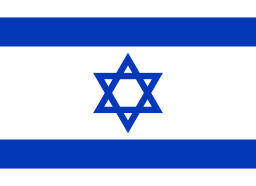
משמר הירדן Coordinates: 33° 0' 10.47" N 35° 35' 59.38" E 
|
||

משמר הירדן Coordinates: 33° 0' 10.47" N 35° 35' 59.38" E 
|
||
| Home | Maps | Community | The Fallen | Links | Census |

Mishmar HaYarden1 was founded as a private farm in 1884 by Mordechai Isaac Lubowsky. Located west of the B'not Yaakov bridge in the Galilee, on the main road to Damascus, Lubowsky named his farm Shoshanat HaYarden, the Rose of the Jordan. Unfortunately, Lubowsky couid not maintain the farm as a viable enterprise, and he sold a portion of his property to Jews who had the financial support of Hovevei Zion2. In September 1890, the new landowners (consisting of both residents of the ancient town of Safed (Tsfat) and First Aliyah Russian immigrants) established a moshava on their newly purchased land; they called it Mishmar HaYarden (Guardian of the Jordan). Despite frequent Bedouin attacks and deaths from fever, the farm did sufficiently well that, after eight years, in 1898, the moshava expanded by adding more people and more land – moshava Hevrat Yaka.
In 1922, according to the British Mandate Census of that year, there were ninety Jews living in Mishmar HaYarden. Nine years later, the British Census showed that there had been a decline in the Jewish population to sixty-five people. Census details can be seen on the Census page. At the time that Israel declared its independence, in May 1948, there were twenty-five families living in Mishmar HaYarden.
On 6 June 1948, during the Israeli War of Independence, units of the Syrian Army, under the command of Taufiq Bashour, attcked Mishmar HaYarden; this attack was repulsed. Four days later, the Syrians resumed their attack on the settlement. This second attack resulted in the moshava being captured and destroyed after house-to-house fighting. Fourteen defenders were killed; twenty-nine Jews were captured and became prisoners of war for thirteen months.
The cause of the capture and destruction of Mishmar HaYarden is in dispute. The underlying dispute seems to be friction between Irgun and Haganah over military authority over the region. The members of the moshava identified with the revisionist views of Ze'ev Jabotinsky3.
After the war ended, on 20 July 1949, the region around Mishmar HaYarden reverted to the Israelis. Mishmar HaYarden was not rebuilt; instead, another moshava was established two kilometers southwest of the original site. Some time later, in 1949, the kibbutz Gadot ("Banks", due to its proximity to the Jordan River) was built on the site of the destroyed Mishmar HaYarden.
|
Please contact Leah Haber Gedalia with your additions, questions, corrections, or comments! webmaster: richard L. baum |
|
This page is hosted at no cost to the public by JewishGen, Inc., a non-profit corporation. If it has been useful to you, or if you are moved by the effort to preserve the memory of our lost communities, your JewishGen-erosity would be deeply appreciated. |
|
KehilaLinks Home |
JewishGen Home
|
Created: 18 Oct 2017
Last Modified: 12-10-2017
Copyright © 2017 Leah Gedalia
All Rights Reserved.